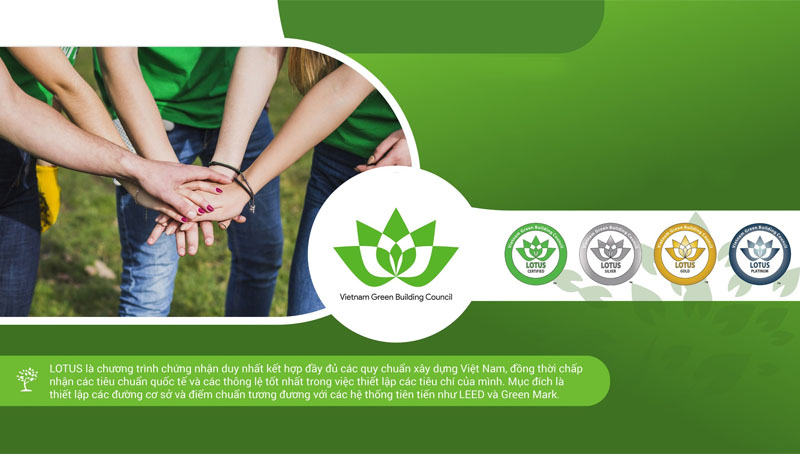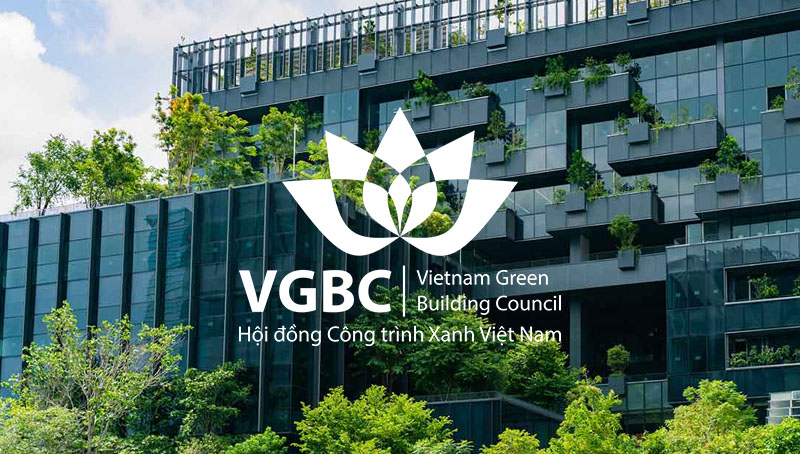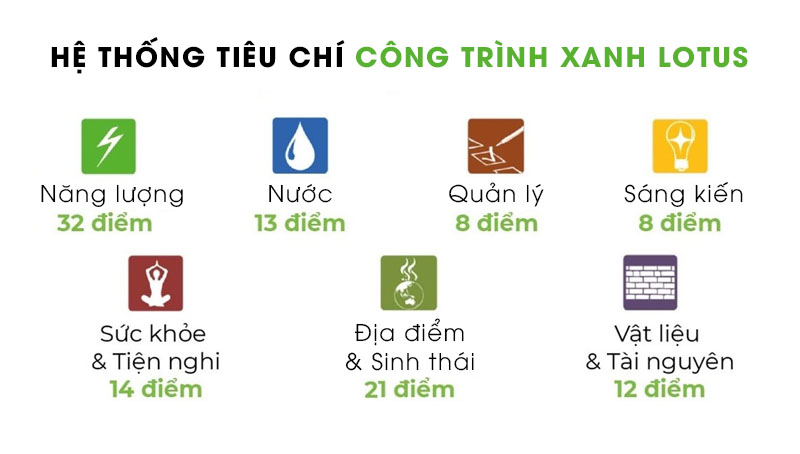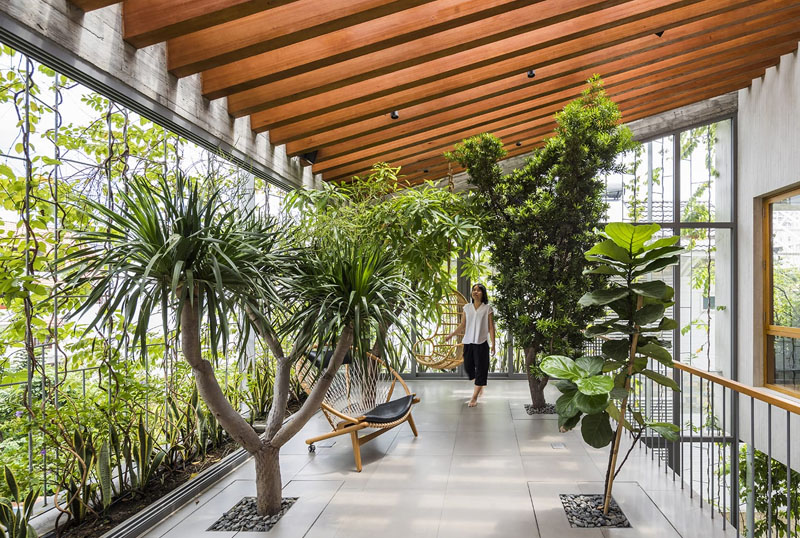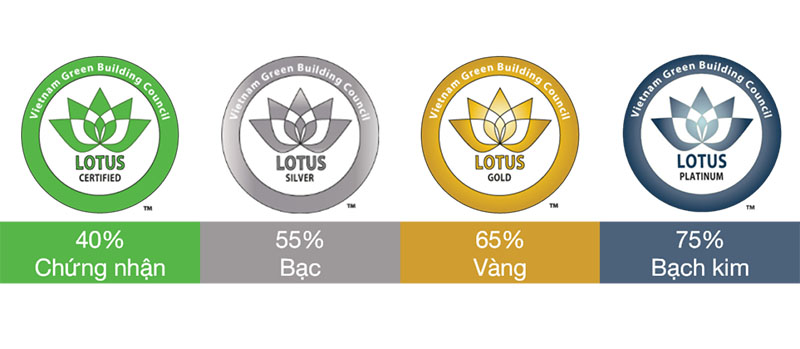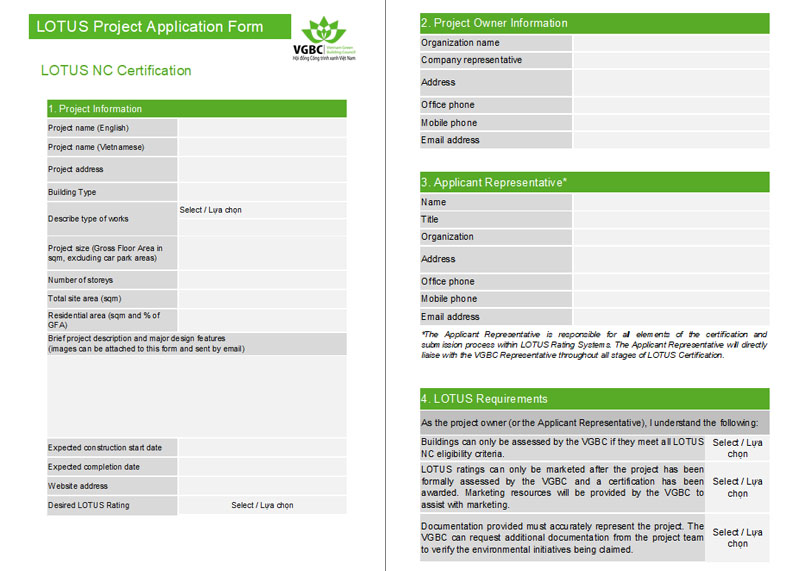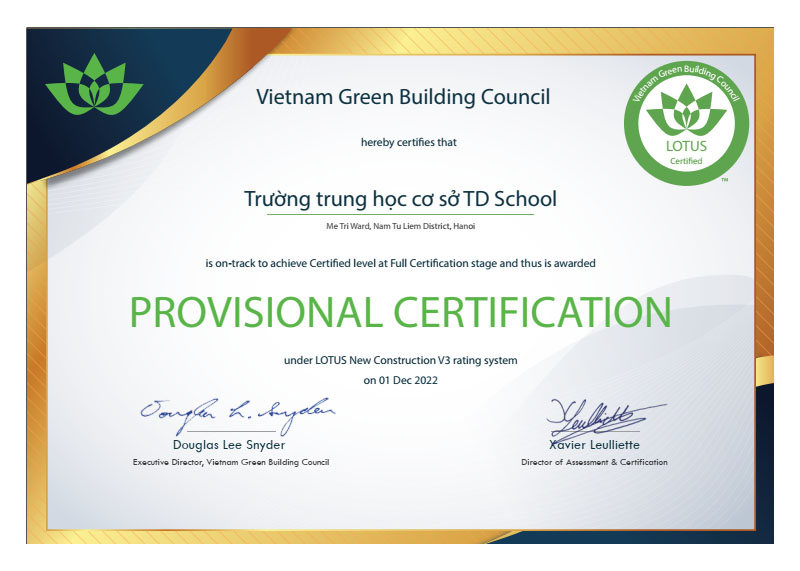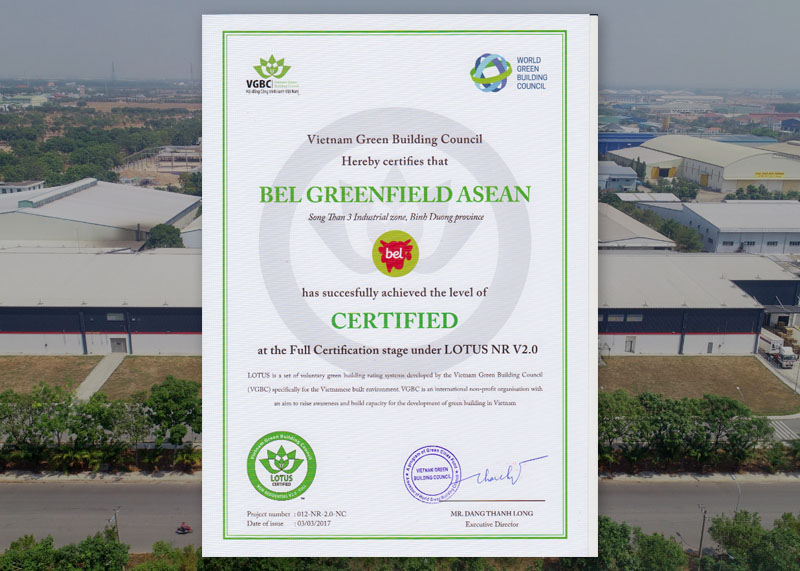LOTUS Certification – Vietnam’s Green Building Standard Explained
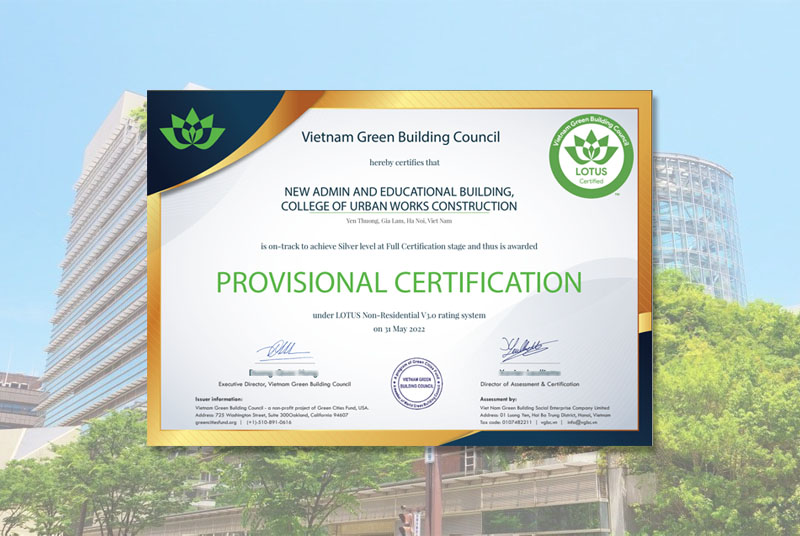
In the context of increasingly severe climate change, sustainable construction has become an inevitable global trend. Not standing apart from this trend, Vietnam has made notable efforts to contribute to the development of green buildings. Among these efforts is the development of the LOTUS standard – the first green building certification and evaluation system specifically applied to the Vietnamese market.
Table of Contents
1. What is the LOTUS Standard?
LOTUS is the first green building certification system specifically developed and applied to the Vietnamese market, tailored to the construction industry characteristics, government regulations, and local climate conditions in Vietnam. This standard was developed by the Vietnam Green Building Council (VGBC).
LOTUS Building serves as a guiding standard to establish objectives aimed at promoting the construction of sustainable, environmentally friendly buildings that prioritize human health, with lower operational costs. Compared to other global green building certification systems such as LEED, EDGE, and BCA Green Mark, LOTUS shares similarities in terms of scoring systems, prerequisites, and specific evaluation requirements. The key difference lies in the adaptation of this standard to the unique construction environment and climate conditions of Vietnam.
Since its launch in 2010, the LOTUS certification system has undergone several revisions and updates. The most recent version, LOTUS NC V3, was released in April 2019.
See more about global green building certifications:
- LEED Certified
- WELL Certified
- Green Mark certification
- LOTUS certification
- EDGE certification
- Green Star certification
2. Purpose of Applying LOTUS Certification
LOTUS Green Certification can be applied for various purposes, as outlined below:
- To support planning, set goals, and establish a sustainable long-term development direction for the project.
- To guide the process of constructing a project from design, construction to operation through environmentally friendly solutions that ensure both economic and social benefits.
- As a basis for measuring and evaluating the sustainability of a building in terms of environment, health, and resource efficiency.
- To serve as an independent certification, providing transparent information about green buildings.
The ultimate purpose of applying the LOTUS standard is not only to meet technical requirements in construction but also to promote a shift in thinking and actions towards a greener, more sustainable future for the community.
3. Which Projects Can Apply the LOTUS Building Standard?
The LOTUS standard can be applied to most types of construction projects through a set of six evaluation tools as follows:
- LOTUS NC V3: Applies to new construction or major renovation projects with a total floor area (GFA) of 2,500m² or more.
- LOTUS BIO: Applies to operational buildings.
- LOTUS Homes: Applies to individual residential buildings.
- LOTUS Small Buildings: Applies to non-residential buildings with a GFA of less than 2,500m².
- LOTUS Interiors: Applies to buildings with completed interior finishes.
- LOTUS Small Interiors: Applies to buildings with completed interior finishes and a GFA of less than 1,000m².
4. LOTUS Green Building Criteria System
According to the latest version, LOTUS NC V3, the system provides a framework for the design, construction, and operation of buildings based on seven key criteria. These are divided into two groups: Mandatory Criteria (including Energy, Water, Materials & Resources, Health & Comfort, Site & Ecology, Management) and Voluntary Criteria (Exemplary Performance).
4.1. Energy
Energy is one of the essential prerequisites for projects seeking LOTUS Green certification. This criterion sets out minimum energy efficiency requirements for buildings and encourages the implementation of measures that reduce overall energy consumption. Additionally, it emphasizes the use of natural energy sources and renewable energy. By meeting the specific requirements of this evaluation criterion, a project can earn up to 32 points.
4.2. Water
Over-exploitation of water resources for building projects is a major cause of the depletion of groundwater. This leads to reduced water quality and the depletion of clean water resources in major cities.
The aim of this criterion is to reduce water consumption by applying measures such as using water-saving devices, reusing rainwater, and designing efficient landscape and irrigation systems.
4.3. Materials and Resources
The Materials and Resources criterion focuses on reducing waste generated during the construction and operational phases of buildings. Specifically, it encourages the selection of sustainable materials that can be recycled or quickly reused. Additionally, green buildings are encouraged to minimize concrete use and reduce the need for landfill or incineration of construction waste.
4.4. Health and Comfort
This criterion focuses on improving the overall environmental quality inside buildings, ensuring the health and comfort of occupants. It evaluates projects through technical requirements such as air quality, thermal and acoustic systems, and ventilation systems. Moreover, LOTUS promotes the use of natural lighting solutions, which not only create a more open and airy living and working space but also have positive effects on health and productivity.
4.5. Site and Ecology
This is one of the key evaluation criteria for the LOTUS certification, which addresses site selection and management. Specifically, it encourages landscape design solutions appropriate to the regional conditions and climate change scenarios. Additionally, it values projects that apply sustainable transport solutions, limit urban heat island effects, and reduce pollution caused by construction activities. The goal is to minimize the negative impacts on the environment and surrounding ecosystems.
4.6. Management
In this category, LOTUS encourages buildings to adopt integrated design solutions, apply Building Information Modeling (BIM) in building operations, and implement various smart management solutions. The aim is to create high-performance green buildings that are cost-efficient to operate.
4.7. Exemplary Performance
Unlike the mandatory criteria above, exemplary performance is a voluntary criterion within the LOTUS certification. This criterion offers projects an opportunity to earn additional points (up to 8 points) through two options:
- Option 1: Demonstrating the use of advanced solutions that improve building performance beyond the requirements of the LOTUS standard.
- Option 2: Applying innovative ideas, initiatives, and technologies that are outside the scope of the LOTUS standard.
5. LOTUS Certification Levels
The LOTUS Building certification is divided into four levels based on the points a project earns. The certification level reflects the degree of compliance with the criteria and the effectiveness of the green building. The levels are as follows:
- LOTUS Certified: The project achieves 40% of the set criteria.
- LOTUS Silver: The project achieves 55% of the set criteria.
- LOTUS Gold: The project achieves 65% of the set criteria.
- LOTUS Platinum: The project achieves 75% of the set criteria.
6. LOTUS Green Certification Registration Process
To obtain a LOTUS Green certification, project owners must follow a specific registration process as outlined below:
- Step 1: Select the Appropriate Evaluation System for the Project
As previously mentioned, the LOTUS evaluation system offers six main tools that apply to different types of projects (new or operational, large or small-scale projects, etc.). Therefore, project owners need to choose the appropriate evaluation system based on the project’s type and scale. They must also thoroughly study the evaluation criteria and scoring system for each tool within the selected LOTUS system.
- Step 2: Register the Project with VGBC
Each project representative must submit a Project Registration Form to notify VGBC of their intention to carry out the project under the LOTUS standard. Subsequently, they will sign an agreement with VGBC for the LOTUS Building Assessment and pay the registration and evaluation fees.
- Step 3: Design and Submit the Design Documents
At this stage, project owners should hire a capable and experienced green building consulting team to collaborate with architects in analyzing and selecting the optimal design options. The design documents should include all architectural, technical, construction, and green technology solutions proposed for the project.
- Step 4: Design Evaluation
Once the design phase is complete, the project representative submits the design documents to VGBC for evaluation. Within eight weeks from receiving the complete documents, VGBC will conduct the evaluation and provide a LOTUS Evaluation Report. If the project meets the required points, VGBC will issue a provisional LOTUS certification, valid for 18 months until project completion.
- Step 5: Construction and Submit Completion Documents
The project is then built according to the approved design plans. After completion, the project owner must prepare and submit the Completion Documents to VGBC, which should include all information about the construction process, acceptance testing, and other supporting documentation.
- Step 6: Evaluation of Completion Documents
Within eight weeks of receiving the completed documents, VGBC will evaluate the completion documents following this process:
- Quick review of submitted documents before detailed evaluation.
- Forming a Project Assessment Review (PAC) committee.
- Providing feedback on the project documents (for any unmet criteria, additional documents needed, etc.).
- PAC drafts the Evaluation Report and submits it to the LOTUS Technical Committee for verification.
- VGBC returns the official Evaluation Report within eight weeks of receiving the complete documents.
The project representative must confirm acceptance of the evaluation results or request a review within 30 days of receiving the official Evaluation Report. The requests will be reviewed and responded to within eight weeks. Finally, if the project earns sufficient points to meet one of the four certification levels, VGBC will issue the LOTUS Green Building Certification.
In conclusion, the LOTUS standard plays a pivotal role in steering the development of sustainable green building practices in Vietnam. Adopting LOTUS not only demonstrates a company’s commitment to environmental responsibility but also provides long-term economic benefits, contributing to sustainable development and improving the quality of life for the community.
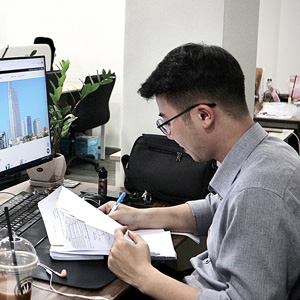
Editor and content team manager at Maison Office.
With over 5 years of experience in consulting and extensive content editing in the real estate services and interior design field. Sharing valuable information with customers, partners, and attracting millions of views.

